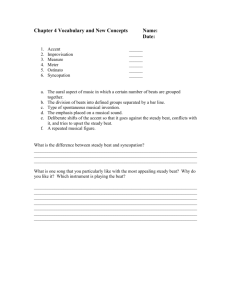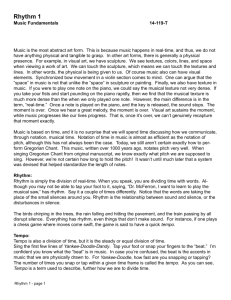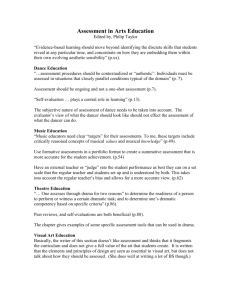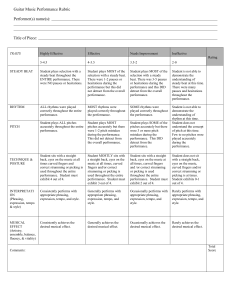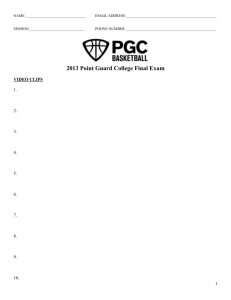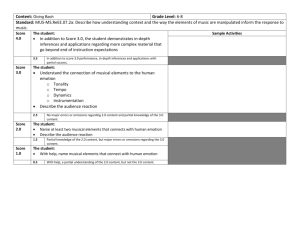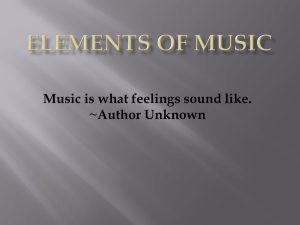Hand Out - Kodaly Society of Ontario
advertisement
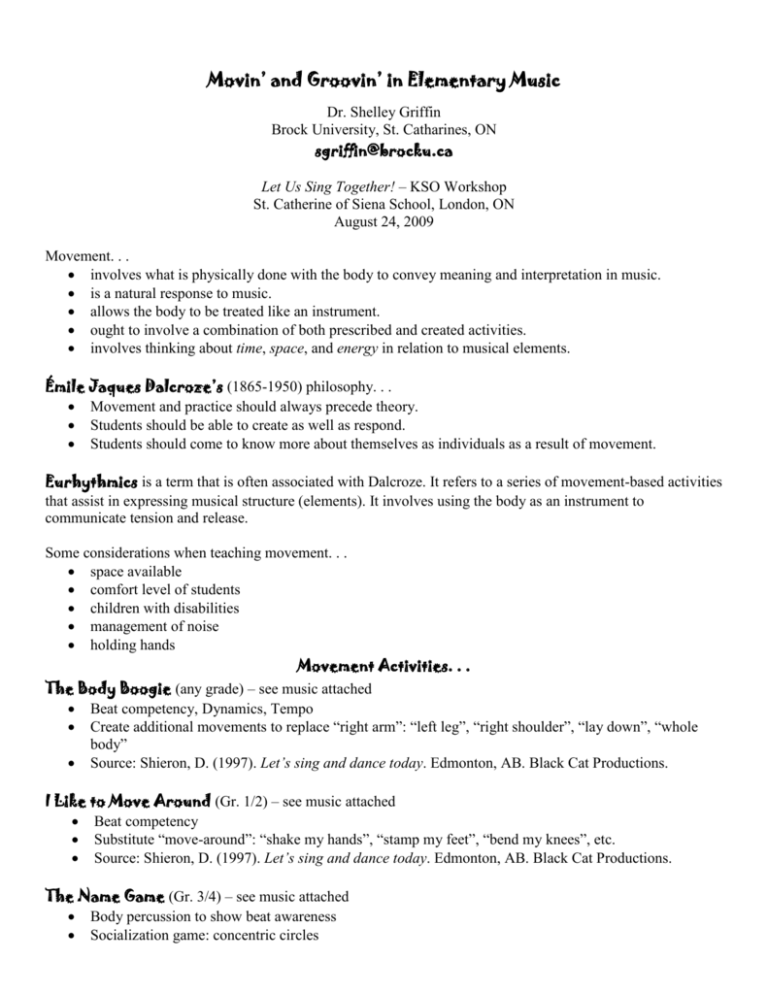
Movin’ and Groovin’ in Elementary Music Dr. Shelley Griffin Brock University, St. Catharines, ON sgriffin@brocku.ca Let Us Sing Together! – KSO Workshop St. Catherine of Siena School, London, ON August 24, 2009 Movement. . . involves what is physically done with the body to convey meaning and interpretation in music. is a natural response to music. allows the body to be treated like an instrument. ought to involve a combination of both prescribed and created activities. involves thinking about time, space, and energy in relation to musical elements. Émile Jaques Dalcroze’s (1865-1950) philosophy. . . Movement and practice should always precede theory. Students should be able to create as well as respond. Students should come to know more about themselves as individuals as a result of movement. Eurhythmics is a term that is often associated with Dalcroze. It refers to a series of movement-based activities that assist in expressing musical structure (elements). It involves using the body as an instrument to communicate tension and release. Some considerations when teaching movement. . . space available comfort level of students children with disabilities management of noise holding hands Movement Activities. . . The Body Boogie (any grade) – see music attached Beat competency, Dynamics, Tempo Create additional movements to replace “right arm”: “left leg”, “right shoulder”, “lay down”, “whole body” Source: Shieron, D. (1997). Let’s sing and dance today. Edmonton, AB. Black Cat Productions. I Like to Move Around (Gr. 1/2) – see music attached Beat competency Substitute “move-around”: “shake my hands”, “stamp my feet”, “bend my knees”, etc. Source: Shieron, D. (1997). Let’s sing and dance today. Edmonton, AB. Black Cat Productions. The Name Game (Gr. 3/4) – see music attached Body percussion to show beat awareness Socialization game: concentric circles Form: Song with body percussion, introduce yourself, side step twice, repeat through the circle Source: Shieron, D. Movin’ and Groovin’ Word Wall (any grade) Brainstorm words that reflect ways to move Practice and label them as non-locomotor (stationary) or locomotor (travelling from space to space): jump, roll, twirl, twist, turn, gallop, tiptoe Practice poses with a partner: lean, bend, arch, push, pull, shrink Assists in recognizing self-space and the space of others Strike-a-Pose, Write-a-Name (Gr. 3/4) Cursive writing, expressive movement Utilize different body parts, try more than one body part at a time Explore movement with a scarf, form two lines and watch others in the class Musical examples - Peer Gynt “Morning”, Edvard Grieg and Hymn of Praise (African Song) Mirror Me (Gr. 3 and up) Creative movement with a partner Beat, Tempo, Expression Without verbally communicating to each other, change leaders Musical examples – Carrickfergus, Oliver Schroer (Celtic Devotion) and Ritmo Vuelta (Los Locos, Latin Dance) Machine Mechanics (Gr. 5/6) Creative movement Beat, Rhythm, Dynamics, Tempo, Timbre, Pitch Divide in groups of 5 or 6, each student creates own movement Organize movements into a sequence, add vocal sound effects Frozen starting position, one person begins, eventually the machine involves everyone, then one at a time drop out to a frozen position Engineers Pistons, valves and wheels and gears, That’s the life of engineers, Thumping, chunking, engines going, Hissing steam and whistles blowing. Not a place I’d rather be than Working round machinery, Listening to that clanking sound, Watching all the wheels go round. J. Garthwaite Noisy Poems collected by Jill Bennett, Oxford University Press Have fun movin’ and groovin’!

